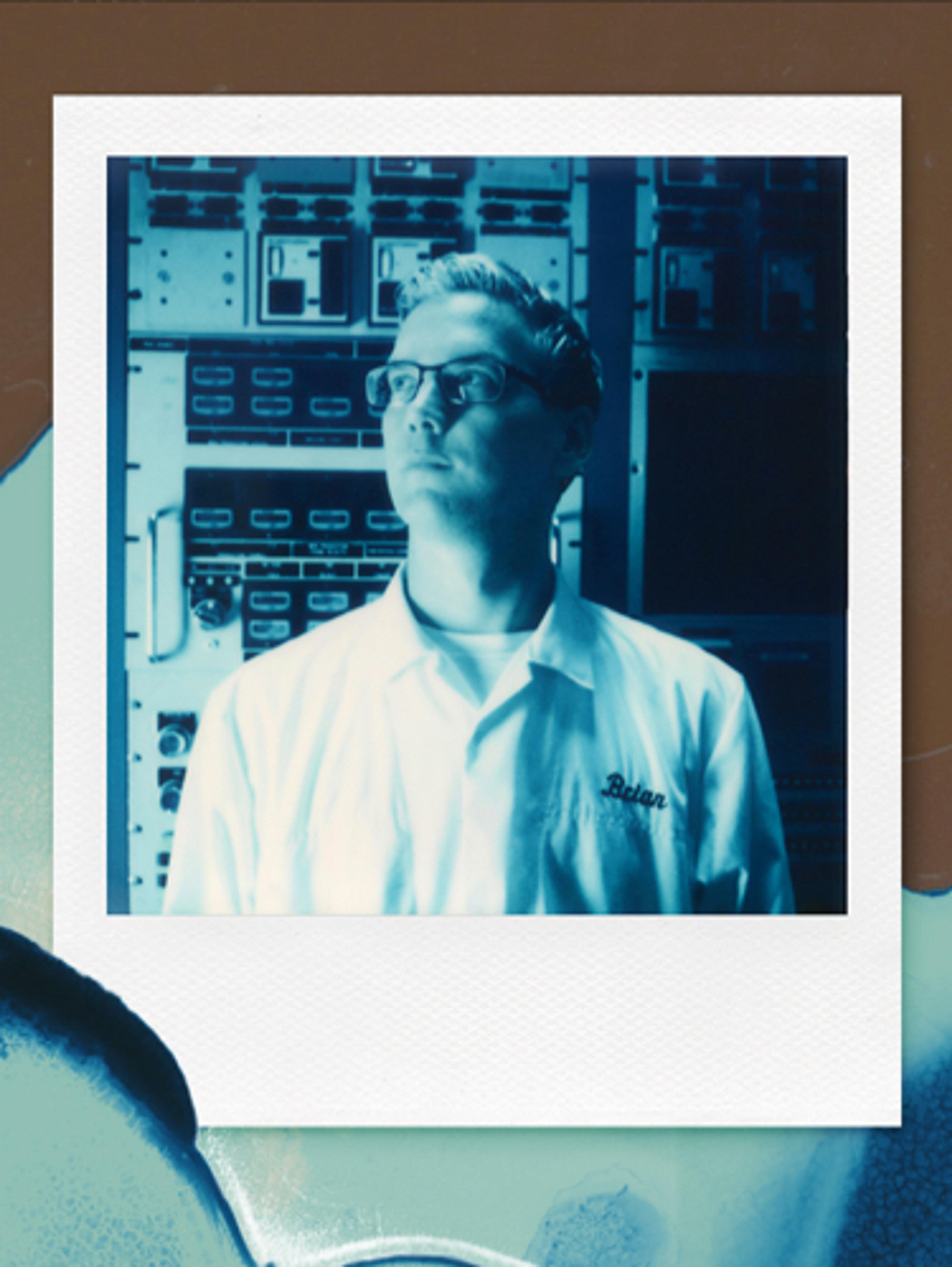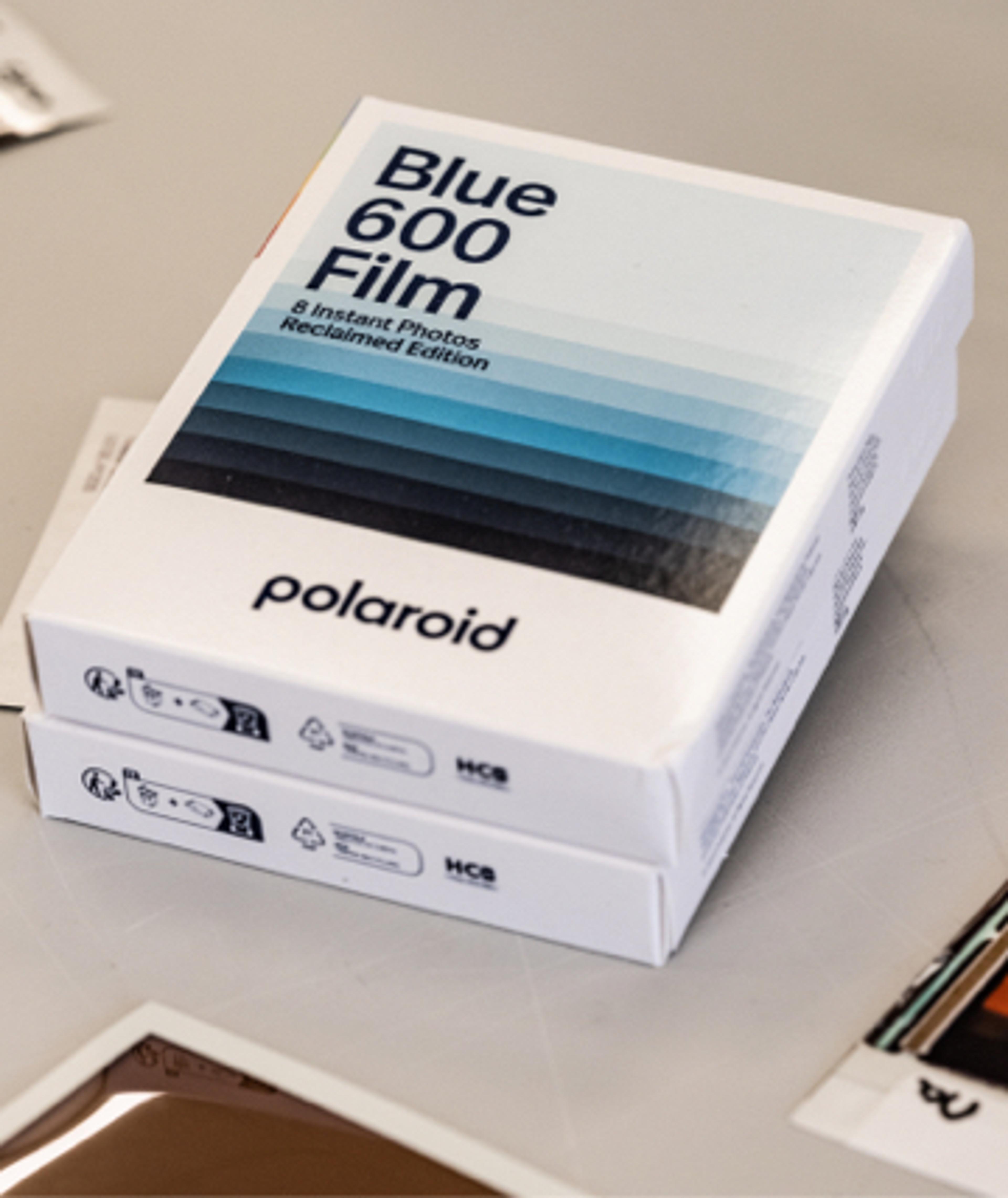- Free Standard Shipping over $75 (US only)
- Newsletter Sign Up - Get 10% Discount
- Order Now Pay Later with Klarna
- Free Standard Shipping over $75 (US only)
Capture Real Life with our Generation 2 cameras. Shop Now.
Our recommendations
Reclaimed Blue 600 Film: Under the microscope.
(It doesn't get more experimental than this.)
In the only remaining Polaroid factory in the world (in Enschede, The Netherlands), there is a lab. And in that lab, probably even right now (unless it’s bedtime), smart & adventurous scientists conduct experiments to improve our existing film chemistry… but science isn't always a direct line. Sometimes experiments have their way of heading towards one result, only for a new result to appear out of the blue.
So it goes with our Reclaimed Blue 600 Film. Read on to see how our super experimental, super blue film came to life, and what’s really going on inside its chemistry.
This is Brian. He’s a Sagittarius.
Brian is one of the brilliant scientists from our lab. He’s been with us for about 5 years now, and has played the maestro to many experimental film—none more so than Reclaimed Blue.
In fact, in his time with us, Brian has tested upwards of 300 chemicals to improve our film paste. But Reclaimed Blue came from a unique sort of test. We don’t normally mix chemicals used in our Black & White film with those used in our color film because they are different film types with very little chemical similarities… But that’s exactly what Brian did in order to stumble upon the chemistry of Reclaimed Blue.
But before we get into what played out, let’s take a look at how our film works.
But before we get into what played out, let’s take a look at how our film works.
Polaroid film consists of 3 main layer systems: A sheet layer, a negative layer, and the paste layer. Each layer has multiple individual layers inside each one of them, but we don’t need to go into that too much here.
The sheet layer is responsible for the neutralization of the picture (so all reactions come to a stop). After this process the final picture lives in this layer.
The negative layer (for color film) contains light-sensitive silver halide crystals with three separate dye developer layers that correspond to the CMY (Cyan, Magenta, Yellow) color system.
The paste layer is introduced after the image comes out of the camera. It lives in a “pod” in the film until that moment. The paste includes our film developer, which is a key ingredient to talk about in terms of Brian’s experiment that led to Reclaimed Blue.
So what did Brian do?
So what did Brian do?
Brian experimented by applying the developer chemical from the B&W paste, TBHQ (which stands for tertiary butylhydroquinone—shoutout to all our chem-nerds), into our color paste. It had never been done before, and when it occurred, something very unexpected happened. An entirely new, impressively strong chemical reaction played out, causing the color film to develop into striking, rich shades of blue. And here’s the thing: while we have theories, no one, not even Brian, fully understands the chemical reaction that’s happening.
"The chemistry behind Polaroid is so complex, it may take 10 to 15 years of research to fully understand it. Even with my science and chemistry background, I understand about 20-30% of it.” - Brian
So, TBHQ is the magical ingredient… but the film wasn’t Reclaimed Blue just yet.
Brian didn’t waste the chance to use reclaimed waste
Brian didn’t waste the chance to use reclaimed waste
Initially, the R&D team was tasked with figuring out how to use smaller leftover pieces of good quality material and out-of-spec negative film so we could avoid scrapping them. The potency and strength of the chemical reaction in Brian’s latest experiment was perfect: Brian could “reclaim” these out-of-spec negatives and use them as the basis for the film: and thus, Reclaimed Blue film was born.
It’s not Monochrome. It’s not Duochrome. It’s completely new.
While Brian didn’t improve our existing film this time with this specific experiment, he did manage to invent new film all together—which is very different from our Monochrome film and Duochrome film.
Reclaimed Blue uses the color film system with the B&W developer (TBHQ), whereas Duochrome uses the B&W film with a color dye added to the paste, and Monochrome uses a single dye coated negative.
Incredibly, Reclaimed Blue uses no added blue dye, only what stems from the newly discovered reaction.
The experiment isn’t over.
The experiment isn’t over.
With the factory team loving Brian’s Reclaimed Blue film, the question naturally arose… “What sort of photography is it good for?”
Well. Brian wasn’t sure. He was very happy with all the selfies he took, but this film had to go beyond just pictures of Brian (sorry Brian).
So this is where you, our creative audience, come in.
If you’re feeling inspired and up for the challenge, grab the Reclaimed Blue 600 film now, and help us figure out what sort of photography it’s good for. Share your best shots and tag us, or use #TheReclaimedExperiment. (And don’t forget to follow us to see all the other Reclaimed Blue Experimental wonders.)









